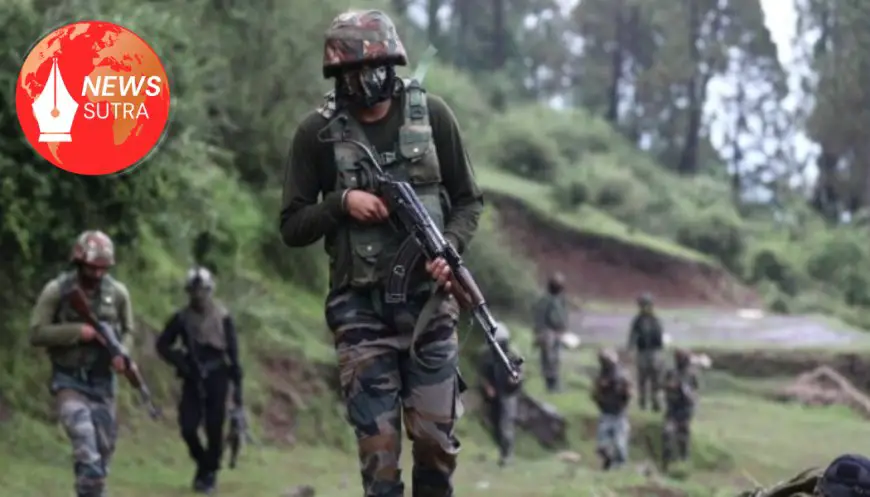Crackdown on Red Terror: 425 Maoists Neutralised as Top Leadership Credits PM Modi’s Strategy
Security forces have neutralised 425 Maoists across India in a sustained crackdown. The government attributes this major success to Prime Minister Narendra Modi’s counter-insurgency strategy.

425 Maoists Neutralised: A Pivotal Milestone in India’s Fight Against Left-Wing Extremism
In a landmark development in India’s decades-long battle against left-wing extremism, 425 Maoists have been neutralised in coordinated counter-insurgency operations since early 2024. The Ministry of Home Affairs, in its mid-year internal security briefing, confirmed the figures while acknowledging the strategic shift under Prime Minister Narendra Modi’s leadership as a key turning point in the fight against Naxalite violence.
This represents one of the most successful phases of anti-Maoist operations in the past 15 years and signals a major setback to the insurgent ecosystem that once dominated parts of central and eastern India.
For official confirmation and updates, visit the Ministry of Home Affairs Annual Report.
How the Crackdown Unfolded: Multi-Pronged Offensive
The offensive spanned across Chhattisgarh, Jharkhand, Odisha, Maharashtra, and Telangana, with the highest intensity seen in Bijapur, Sukma, and Gadchiroli districts—all former strongholds of Maoist leadership.
Key aspects of the strategy included:
-
Advanced Intelligence Gathering:
Intelligence Bureau (IB) and local state units deployed drone surveillance, satellite mapping, and human intelligence (HUMINT) to detect Maoist hideouts with high precision. -
Coordinated Ground Strikes:
The CRPF’s elite Commando Battalion for Resolute Action (CoBRA) led tactical raids, while state police forces provided real-time ground coordination. Nearly 135 operations were executed jointly. -
Technological Edge:
Real-time battlefield communication using high-frequency encrypted radio networks, night-vision equipment, and AI-assisted mapping systems helped in navigating tough forest terrain. -
Civic Outreach and Rehabilitation:
In parallel, the government scaled up development projects like the Aspirational Districts Programme, skill-building initiatives, and mobile medical units in red zones to win hearts and minds.
For a deep dive into CRPF-led strategies, explore this CRPF strategy document on anti-Maoist operations.
Leadership Response: Modi’s ‘Iron-Fist-with-Velvet-Glove’ Policy Credited
Senior Home Ministry officials and intelligence veterans have credited Prime Minister Narendra Modi’s counter-insurgency doctrine, which combines muscular security measures with targeted socio-economic reforms.
Union Home Minister Amit Shah remarked:
“This is not just a tactical success—it’s the result of a long-term vision led by the Prime Minister, where development meets deterrence.”
This approach has evolved since 2014, with consistent investment in:
-
Upgraded weapons and infrastructure for security forces
-
Fast-tracking road, telecom, and power projects in LWE zones
-
Integrated command centres and joint task forces at the district level
The official framework for the government’s anti-LWE policy can be accessed on the Home Ministry’s LWE Division portal.
Ground Reality: Shifting Balance in Red Zones
In areas once under Maoist control, locals are beginning to see the change. According to field reports from Bastar and Latehar:
-
Surrender rates are rising, with over 200 armed cadres giving up arms in exchange for rehabilitation packages.
-
Public participation in elections has surged, crossing 70% in areas where polling booths were once boycotted or bombed.
-
Infrastructure build-outs, including roads, mobile towers, and schools, have accelerated in these regions over the last 18 months.
An excellent on-ground feature detailing this shift was published recently by The Hindu.
Impact on Maoist Command Structure
Security experts believe the neutralisation of such a large number of insurgents has severely dented the command hierarchy of the CPI (Maoist):
-
Senior commanders like Madhavi alias Narmada and Kishen Da’s regional aides have reportedly been eliminated or captured.
-
Internal communications recovered during raids suggest shortages of ammunition, funds, and new recruits.
-
Intelligence suggests the Eastern Regional Bureau and Dandakaranya Special Zonal Committee—two major Maoist bodies—are nearing operational collapse.
In-depth analysis of Maoist structure and leadership dynamics is available on South Asia Terrorism Portal.
Criticism and Human Rights Concerns
Despite the overwhelming support for the crackdown, some human rights groups have expressed concerns over:
-
Alleged excesses by security forces, including custodial deaths and targeting of tribal civilians
-
Lack of transparent judicial review in some high-casualty operations
-
Slow pace of rehabilitation and legal aid for surrendered insurgents
A 2024 report by Amnesty International India called for improved oversight and third-party audits of anti-Naxal missions to ensure compliance with human rights norms.
Conclusion: Turning Point or Temporary Win?
The neutralisation of 425 Maoists marks a watershed moment in India’s internal security narrative. With large swathes of previously hostile territory now opening up for development and democracy, it appears the government’s “clear-hold-build” model is yielding results.
But experts caution that sustained engagement, inclusive development, and institutional trust-building are crucial to prevent a resurgence of insurgency under a new guise.
India’s fight against Maoism may be nearing its final chapters—but the script must continue to be written with accountability, compassion, and long-term vision.














